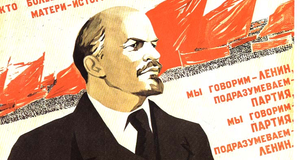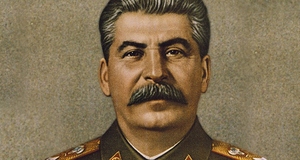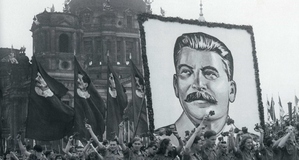Featured Article:The Holocaust in Romania: The Extermination and Protection of the Jews Under Antonescu's Regime
By
2014, Vol. 6 No. 12 | pg. 2/2 | « First, as Minster of War, Antonescu had witnessed firsthand the disastrous effects that such a policy had had on the Romanian economy in 1937-38, and was sensitive to the fact that it brought down the government of Alexandru Cuza. Such economic upheaval, with the threat of social unrest, was repellent to a man who saw himself as the defender of order and legitimacy in the Romanian nation. Second, as a soldier with little experience in economic management, Antonescu was naturally cautious; he preferred the retention of some form of a liberal free-market to a statist or managed economy as proposed by the Legionaries. Finally, such a radical program of confiscation of property would also have concentrated wealth in the hands of the Legionaries, who Antonescu increasingly began to identify as his political rivals for control over the Romanian state.19 As the war against the Soviet Union continued to drag on, it became increasingly apparent to Antonescu that Germany was going to lose the war. As early as November 1941, Antonescu began to express doubts as to the feasibility of victory against the Soviet Union. By the end of the year, Antonescu had begun to shift his attention to beginning preparations for a possible peace conference. Antonescu was determined that Romania be in a strong bargaining position in order to retain its recent territorial acquisitions.He was particularly concerned about the position of Hungary at a future peace conference, with which Romania had an outstanding dispute over the territory of Northern Transylvania. Believing the Hungarians to have a great influence in global public opinion, Antonescu was determined that Romania’s bargaining position not be undermined by its mistreatment of Jews and other minorities. To this end, Antonescu directed the Council of Ministers to prepare a draft emphasizing Hungarian atrocities against ethnic Romanians in Northern Transylvania in order that Romania’s policies appeared in a more moderate light by comparison. Antonescu also began to moderate his own Jewish policies; the program of extermination which had been perpetrated by the Romanian Army in Bessarabia, Northern Bukovina, and Transnistria throughout the summer and fall of 1941 was not extended to the rest of Romania’s Jewish population. In October of 1942 Antonescu terminated preparations to deport the Jewish population of Old Romania to Nazi concentration camps, revoking a prior agreement with Hitler and departing sharply from his initial policy of ethnic purification. In addition, Romania lobbied the German government to grant exemptions to Romanian Jews still on German territory and even facilitated emigration of a small amount of Romanian Jews to Palestine.20 Therefore, the extermination of the Jews in Romania must be viewed as a distinct chapter in the history of the Holocaust. Though aware of Hitler’s intentions to exterminate the Jews, Antonescu carried out his own policy of extermination for reasons entirely independent of Hitler and the Third Reich. The massacre, deportation, and internment of Romanian and Ukrainian Jews in the territories of Bessarabia, Northern Bukovina, and Transnistria were part of Antonescu’s wider policy of racial and ethnic purification of the Romanian nation, one which was rooted in both elite and populists fears of ethnic minorities and anti-Semitism. During the euphoric months of victory in the summer and autumn of 1941, the Romanian Army largely accomplished the objective of cleansing these newly reconquered regions of their local Jewish inhabitants, independently of Nazi Germany. Romania retained its independence through active collaboration Hitler, through its military contributions on the Eastern Front and by using its vast natural reserves of oil, which Germany’s war effort was dependent upon, as economic leverage and thus managed to avoid both German military occupation and becoming a mere satellite of the Third Reich. Thus, Antonescu was able to control the pace of the extermination, and after 1942 the campaign of purification gradually came to a halt. He was also able to limit the policy of extermination, choosing not to kill or deport the vast majority of the Jews living in Old Romania to prevent the collapse of the Romanian economy and to improve Romania’s bargaining position at a possible post-war peace conference. As such, most of the Jews in Old Romania survived the Second World War. Nevertheless, Antonescu and his regime were responsible for the death of roughly 300,000 Jews, a figure second only to Nazi Germany. ReferencesAncel, Jean. "The German-Romanian Relationship and the Final Solution." Holocaust and Genocide Studies 19, no.2 (2005): 252-275. Brustein, William I., and Ryan D. King. "Balkan Anti-Semitism: The Cases of Bulgaria and Romania before the Holocaust." East European Politics and Societies 18, no. 3 (2004): 430-454. Carmelly, Felicia. Shattered! 50 Years of Silence: History and the Voices of the Tragedy in Romania and Transnistria. Scarborough: Abbeyfield Publishers, 1997. Dear, I.C.B. and M.R.D. Foot, eds. The Oxford Companion to World War II. Oxford: Oxford University Press, 2001. Deletant, Dennis. Hitler's Forgotten Ally: Ion Antonescu and his Regime, Romania 1940-44. New York: Palgrave Macmillan, 2006. Harward, Grant. "Purifying the Ranks: Ethnic and Minority Policy in the Romanian Armed Forces during the Second World War." Studies in Ethnicity and Nationalism 13, no. 2 (2013): 158-178. Hayward, Joel S. A. Stopped at Stalingrad: The Luftwaffe and Hitler's Defeat in the East, 1942-1943. Lawrence: University Press of Kansas, 1998. Hollander, Ethan. "The Final Solution in Bulgaria and Romania: A Comparative Perspective." East European Politics & Societies 22, no. 2 (2008): 203-248. “Holocaust Encyclopaedia, Romania.” United States Holocaust Memorial Museum. 20 June 2014, http://www.ushmm.org/wlc/en/article.php?ModuleId=10005472. Ioanid, Radu. "The Holocaust in Romania: The Iasi Pogrom of June 1941." Contemporary European History 2, no. 2 (1993): 119-148. Ioanid, Radu. "The Sacralised Politics of the Romanian Iron Guard".Totalitarian Movements and Political Religion5, no. 3 (2004): 419-453. Solonari, Vladimir. "An Important New Document on the Romanian Policy of Ethnic Cleansing during World War II." Holocaust and Genocide Studies 21, no. 2 (2007): 268-297. Solonari, Vladimir. "Model Province": Explaining the Holocaust of Bessarabian and Bukovinian Jewry." Nationalities Papers 34, no. 4 (2006): 471-500. Wiesel, Elie. Final Report. International Commission on the Holocaust in Romania. Romania, 2004. Endnotes1.) Though 500,000 Jews were deported from Hungary, this was done only after the German occupation on 19 March 1944. Dennis Deletant, Hitler's Forgotten Ally: Ion Antonescu and his Regime, Romania 1940-44 (New York: Palgrave Macmillan, 2006), 127. 2.) Antonescu was raised to the rank of Marshal on 21 August 1941; previously he had been only a general. For the purpsoes of simplicity, he will be referred to as Marshal Antonescu, even for dates prior to 1941. Vladimir Solonari, "An Important New Document on the Romanian Policy of Ethnic Cleansing during World War II," Holocaust and Genocide Studies 21, no. 2 (2007): 268. 3.) For the purposes of this paper, the term “Old” Romania will be defined as encompassing the territory of Romania prior to Operation Barbarossa in June 1941, but after the secession of territory to Hungary and the Soviet Union in 1940. These included the Regat, Northern Bukovina, and Southern Transylvania. Radu Ioanid, "The Holocaust in Romania: The Iasi Pogrom of June 1941," Contemporary European History 2, no. 2 (1993): 120. 4.) The Iron Guards were a right-wing, Fascist party in Romania that advocated for the ethnic-cleansing of the Romanian nation, particularly of the Jews. Antonescu brought many leading Iron Guard Legionaries into his government. The period between Antonescu’s appointment by King Carol II in September 1940 to his suppression of the Iron Guard Revolt in January 1941, is usually referred to as the National Legionary State. Radu Ioanid, "The Sacralised Politics of the Romanian Iron Guard".Totalitarian Movements and Political Religion5, no. 3 (2004): 427; Vladimir Solonari, "Model Province": Explaining the Holocaust of Bessarabian and Bukovinian Jewry," Nationalities Papers 34, no. 4 (2006): 473-74 5.) Solonari, "Model Province, "473-74; Joel S. A. Hayward, Stopped at Stalingrad: The Luftwaffe and Hitler's Defeat in the East, 1942-1943 (Lawrence: University Press of Kansas, 1998), 4. 6.) Wiesel, Elie. Final Report. International Commission on the Holocaust in Romania. (Romania, 2004): 244 7.) Wiesel, 244. 8.) Solonari, “Ethnic Cleansing during World War II,” 268-69; 9.) Solonari, “Model Province,” 477 10.) Ioanid, "The Sacralised Politics of the Romanian Iron Guard," 427. 11.) Felicia Carmelly, Shattered! 50 Years of Silence: History and the Voices of the Tragedy in Romania and Transnistria (Scarborough: Abbeyfield Publishers, 1997): 25-32; Grant Harward, "Purifying the Ranks: Ethnic and Minority Policy in the Romanian Armed Forces during the Second World War," Studies in Ethnicity and Nationalism 13, no. 2 (2013): 169; Ioanid, “The Iasi Pogrom of June 1941,” 143; Solonari, “Ethnic Cleansing during World War II,” 269; Solonari, “Model Province,” 477; Weisel, 20. 12.) Romania was never occupied by German forces; however it was occupied by the Red Army after signing a peace treaty with the Soviet Union in 1944. I.C.B. Dear and M.R.D. Foot, eds, The Oxford Companion to World War II (Oxford: Oxford University Press, 2001): 746. 13.) Jean Ancel, "The German-Romanian Relationship and the Final Solution," Holocaust and Genocide Studies 19, no. 2 (2005): 252-54; Deletant, 2; Ethan Hollander, "The Final Solution in Bulgaria and Romania: A Comparative Perspective," East European Politics & Societies 22, no. 2 (2008): 206. 14.) Dear and Foot, 827; Deletent, 26-27; Hayward 3-4. 15.) Some historians refer to these as extermination camps, though the term can be misleading especially when compared to Nazi Germany’s specific built extermination camps. Romania never developed an industrialized method of killing Jews, most died of hunger, disease, or were shot in the camps. As such, I have chosen to use the term concentration camp instead. William I. Brustein and Ryan D. King, "Balkan Anti-Semitism: The Cases of Bulgaria and Romania before the Holocaust," East European Politics and Societies 18, no. 3 (2004): 432-33. 16.) Deletant, 127; “Holocaust Encyclopaedia, Romania,” United States Holocaust Memorial Museum, 20 June 2014, http://www.ushmm.org/wlc/en/article.php?ModuleId=10005472; Solonari, “Model Province,” 471. 17.) Carmelly, 72; Delentant, 128; “Holocaust Encyclopaedia, Romania.” United States Holocaust Memorial Museum. 18.) Hollander, 203-04, 207; Solonari, “Model Province,” 471. 19.) Solonari, “Model Province,” 478-79. 20.) Deletant, 127; Solonari, “Model Province,” 471, 480-481. 21.) Dear and Foot, 827. 22.) Hollander, 207. Suggested Reading from Inquiries Journal
Inquiries Journal provides undergraduate and graduate students around the world a platform for the wide dissemination of academic work over a range of core disciplines. Representing the work of students from hundreds of institutions around the globe, Inquiries Journal's large database of academic articles is completely free. Learn more | Blog | Submit Latest in History |


















